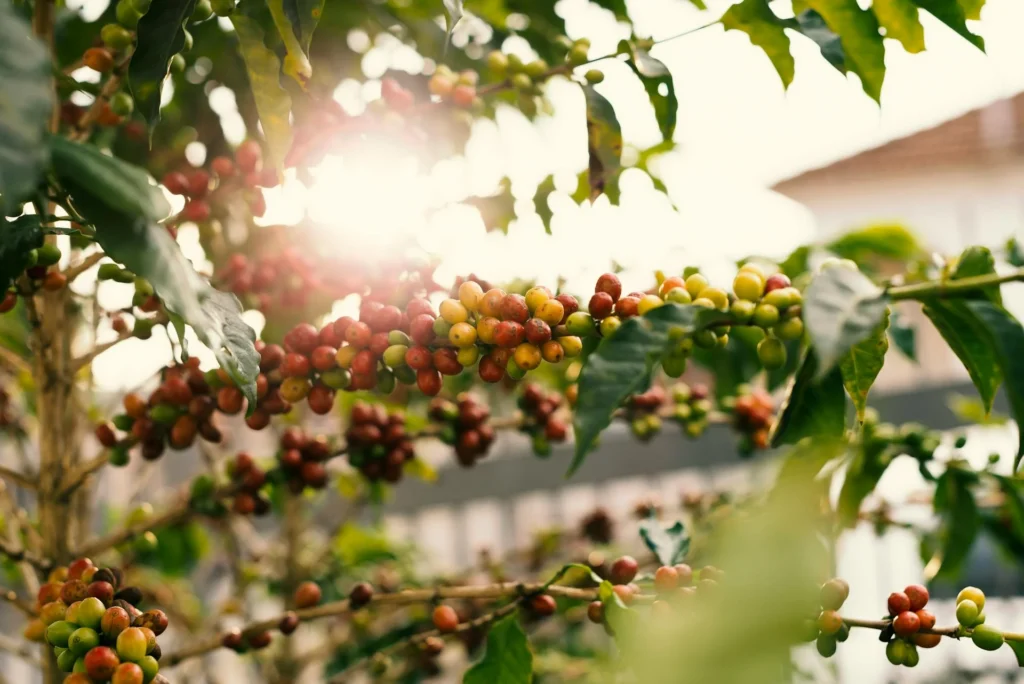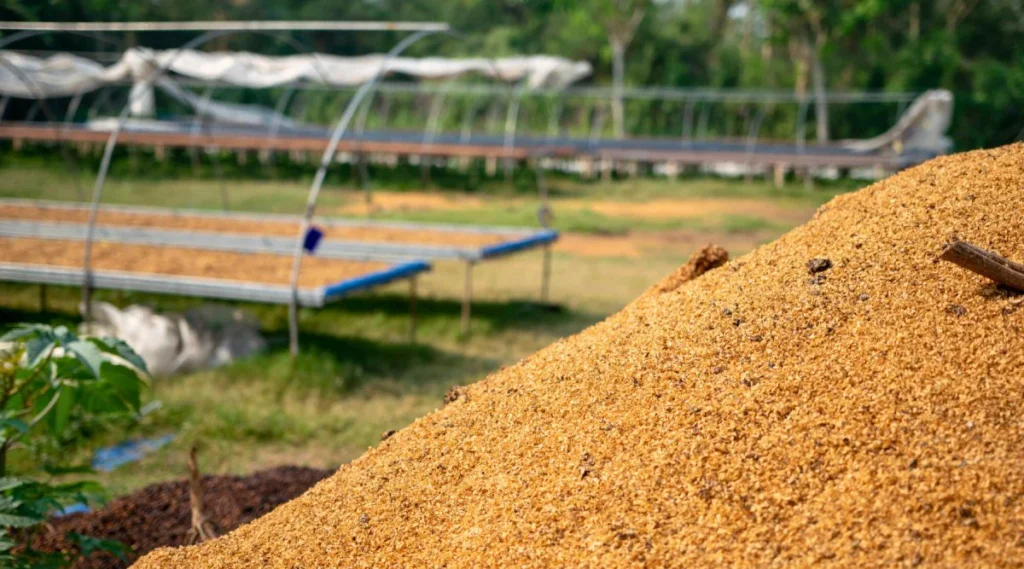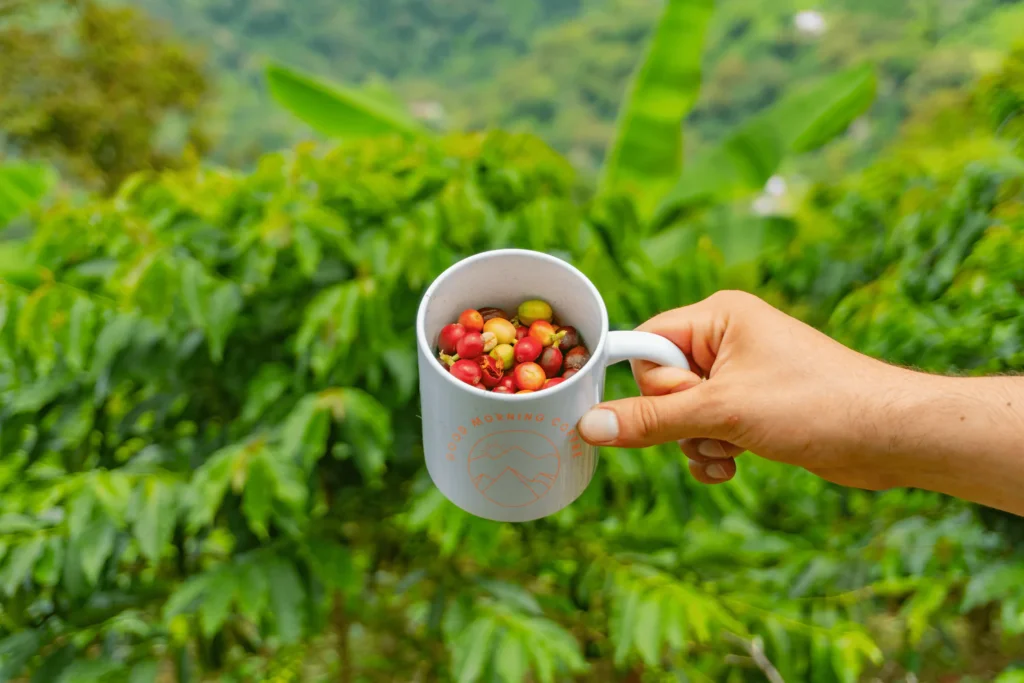Brewing coffee using a French Press is an art and a science. This classic method, also known as a press pot or plunger pot, delivers a rich, full-bodied cup of coffee that’s hard to beat. But the secret to a perfect French Press brew lies in getting the coffee-to-water ratio just right. Too much coffee, and you’ll end up with a bitter, over-extracted mess; too little, and your coffee will be weak and watery.
In this guide, we’ll explore how much coffee for French press is ideal, why it matters, and how to achieve the perfect balance for your taste buds. Let’s dive in and start brewing the best French Press coffee you’ve ever had!

Understanding the French Press
The French Press, also known as a press pot or plunger pot, is a straightforward and elegant coffee brewing device that has won the hearts of coffee enthusiasts worldwide. Its mechanism is simple yet effective: coarsely ground coffee is steeped in hot water, and then a metal or plastic plunger with a fine mesh filter is pressed down to separate the grounds from the brewed coffee.
This method allows the natural oils and fine particles from the coffee grounds to remain in the brew, resulting in a rich, full-bodied cup with a depth of flavor that’s often lost in other brewing methods. The French Press is beloved for its ability to deliver a robust and aromatic coffee experience with minimal effort and equipment.

Types of French Press
French Presses come in a variety of materials and sizes, each offering unique benefits that can impact your brewing experience. Here’s a rundown of the most common types:
Materials
- Glass: The most popular type, glass French Presses are favored for their clarity, allowing you to watch the brewing process. They are typically lightweight and easy to clean, but can be fragile and prone to breaking.
- Stainless Steel: Known for their durability and excellent heat retention, stainless steel French Presses are perfect for those who want a robust and long-lasting option. They are often double-walled, keeping your coffee hot for longer periods.
- Ceramic: These French Presses are aesthetically pleasing and provide good heat retention. They are less common but offer a unique style and excellent insulation.
- Plastic: Usually the most affordable and lightweight option, plastic French Presses are great for travel or outdoor use. However, they may not retain heat as well as glass or stainless steel and can sometimes impart a slight taste to the coffee.
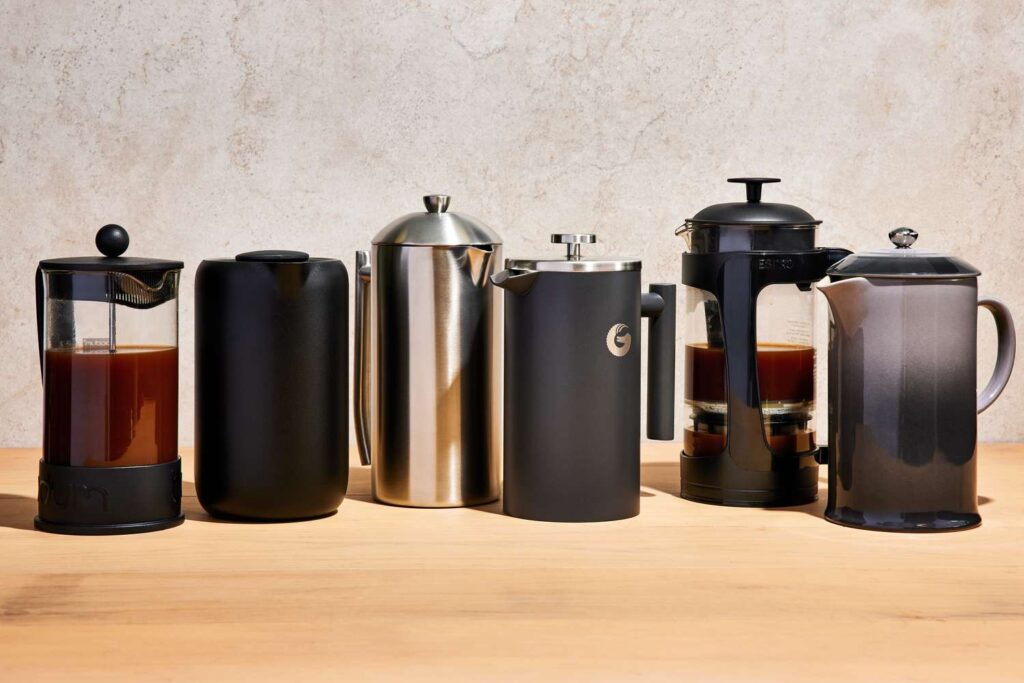
Sizes
French Presses come in various sizes, typically ranging from 12 ounces (350 ml) to 51 ounces (1.5 liters). The size you choose depends on how much coffee you want to brew at once:
- Small (12-17 oz / 350-500 ml): Ideal for single servings or small households.
- Medium (24-34 oz / 700-1000 ml): Perfect for couples or small gatherings.
- Large (51 oz / 1.5 liters): Great for large families or entertaining guests.
Choosing the right French Press involves considering your brewing habits, the number of people you’re serving, and your personal preference for materials. Each type brings a unique touch to your coffee-making ritual, ensuring there’s a perfect French Press for everyone.
The Perfect Coffee-to-Water Ratio
Achieving the perfect coffee-to-water ratio is crucial for brewing a delicious cup of French Press coffee. The general guideline for a balanced brew is to use a ratio of 1:15, which means one part coffee to fifteen parts water. However, this can be adjusted based on your taste preferences. Here’s a detailed guide for different French Press sizes:
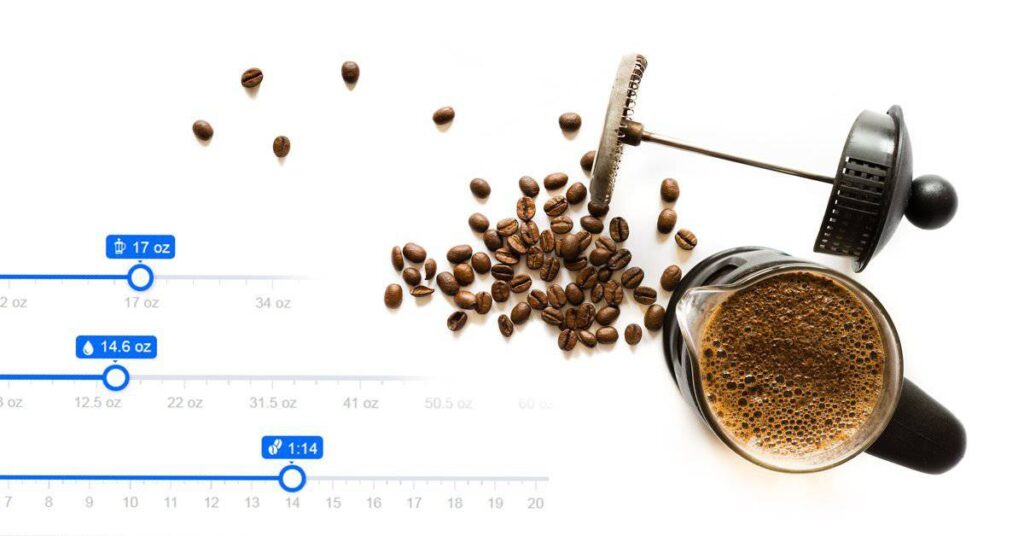
Standard Ratios
- 12 oz (350 ml) French Press: Use 24 grams of coffee (about 3 tablespoons) and 350 ml of water.
- 17 oz (500 ml) French Press: Use 33 grams of coffee (about 4.5 tablespoons) and 500 ml of water.
- 34 oz (1 liter) French Press: Use 67 grams of coffee (about 9 tablespoons) and 1 liter of water.
- 51 oz (1.5 liters) French Press: Use 100 grams of coffee (about 13.5 tablespoons) and 1.5 liters of water.
Adjusting for Taste
If you prefer a stronger brew, you can use a 1:12 ratio (one part coffee to twelve parts water). For a milder cup, try a 1:17 ratio. Experiment with these ratios to find the perfect balance that suits your palate.
Coffee Measurement Guidelines
Accurate measurement of coffee is essential to achieve consistency in your brews. Here are two common methods to measure coffee for your French Press:
Using a Scale
A digital kitchen scale is the most accurate way to measure coffee. Here’s how to do it:
- Weigh the Coffee: Place an empty container on the scale, tare it to zero, and then add your coffee beans or grounds until you reach the desired weight.
- Consistency: Using a scale ensures you use the exact amount of coffee every time, leading to consistent results.

Using Scoops
If you don’t have a scale, you can use scoops as a rough guide. Typically, one tablespoon of coffee weighs about 5-7 grams, depending on the grind size and bean type. Here’s a quick reference:
- 12 oz (350 ml) French Press: About 3 tablespoons of coffee.
- 17 oz (500 ml) French Press: About 4.5 tablespoons of coffee.
- 34 oz (1 liter) French Press: About 9 tablespoons of coffee.
- 51 oz (1.5 liters) French Press: About 13.5 tablespoons of coffee.
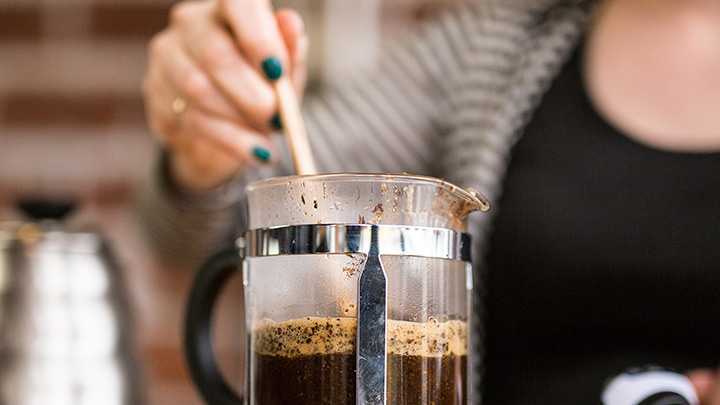
While scoops can be convenient, keep in mind that the density of coffee can vary, making scales the preferred method for precision.
Water Temperature and Quality
The water you use plays a significant role in the taste of your French Press coffee. Here’s why water temperature and quality matter:
Ideal Water Temperature: The optimal water temperature for brewing French Press coffee is between 195°F and 205°F (90°C to 96°C). Water that’s too hot can scorch the coffee grounds, leading to a bitter taste, while water that’s too cool can result in under-extraction, producing a weak and sour brew. To achieve the right temperature, bring your water to a boil and let it sit for about 30 seconds before pouring it over the coffee grounds.
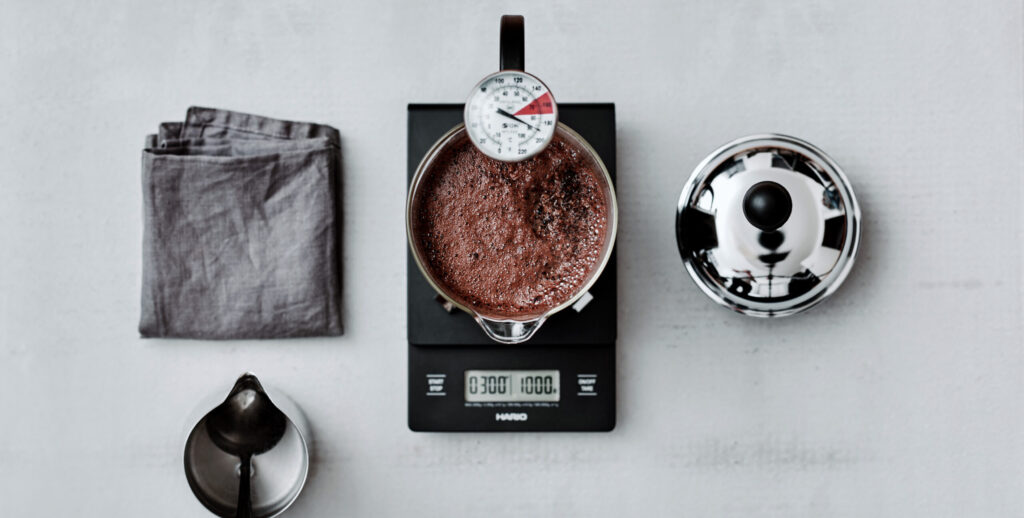
Water Quality: The quality of your water can greatly affect the flavor of your coffee. Here are a few tips:
- Filtered Water: Using filtered water can remove impurities and chlorine, which can negatively impact the taste of your coffee.
- Mineral Content: Ideally, use water with a balanced mineral content. Too many minerals can cause the coffee to taste metallic, while too few can make it flat.
- Freshness: Always use fresh water. Stale or previously boiled water can taste flat and affect the extraction process.

Step-by-Step Brewing Guide
Brewing coffee in a French Press is a simple yet rewarding process. Follow these step-by-step instructions to brew the perfect cup:
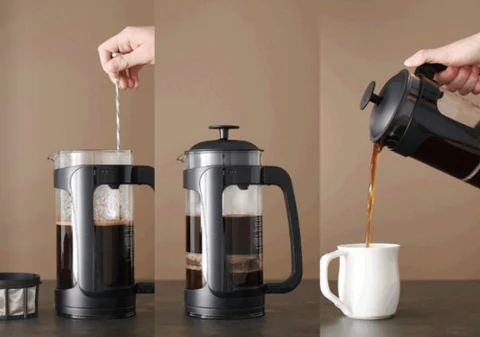
- Measure Your Coffee and Water: Using the ideal coffee-to-water ratio (1:15 as a starting point), measure out your coffee and water. For example, use 24 grams of coffee and 350 ml of water for a 12 oz French Press.
- Boil Water: Bring your water to a boil, then let it cool for about 30 seconds to reach the optimal brewing temperature of 195°F to 205°F (90°C to 96°C).
- Grind Your Coffee: Use a burr grinder to grind your coffee beans to a coarse consistency, resembling breadcrumbs. Coarse grounds prevent over-extraction and make it easier to press the plunger.
- Preheat the French Press: Pour a small amount of hot water into the French Press to preheat it, then discard the water. This helps maintain the brewing temperature.
- Add Coffee Grounds: Place the coarse coffee grounds into the preheated French Press.
- Add Hot Water: Pour the hot water over the coffee grounds, making sure all the grounds are saturated. Stir gently with a wooden or plastic spoon to ensure even extraction.
- Place the Lid: Place the lid on the French Press with the plunger pulled all the way up. This helps retain heat during the brewing process.
- Brew Time: Let the coffee steep for about 4 minutes. Adjust the time based on your desired strength (see infusion time section).
- Press the Plunger: After the brewing time is up, slowly and steadily press the plunger down. Apply even pressure to avoid spilling.
- Serve and Enjoy: Pour your freshly brewed coffee into a mug and enjoy. Avoid leaving coffee in the French Press for too long, as it can continue to extract and become bitter.
Grinding Coffee for French Press
The grind size of your coffee beans is crucial for a perfect French Press brew. Here’s how to grind your coffee beans for optimal extraction:
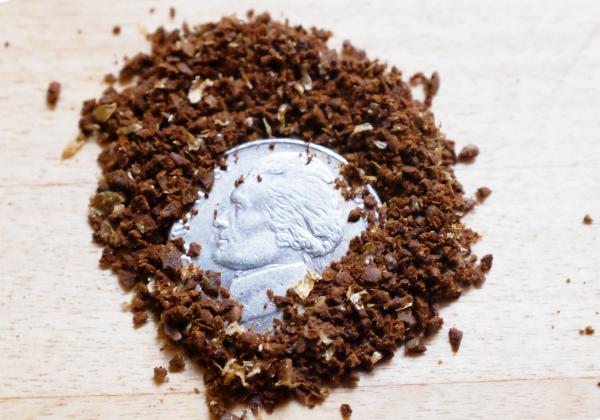
- Coarse Grind: The ideal grind size for French Press is coarse, resembling breadcrumbs or sea salt. Coarse grounds prevent over-extraction and make it easier to press the plunger.
- Consistent Grind: Use a burr grinder for a more consistent grind size. Blade grinders can produce uneven grounds, leading to inconsistent extraction and an inferior brew.
- Freshness: Grind your coffee beans just before brewing to preserve the freshness and flavor of the coffee. Pre-ground coffee loses its aroma and taste over time.
Infusion Time
The infusion time, or how long you let the coffee steep, significantly affects the strength and flavor of your brew. Here are recommended infusion times for different strengths and quantities of coffee:
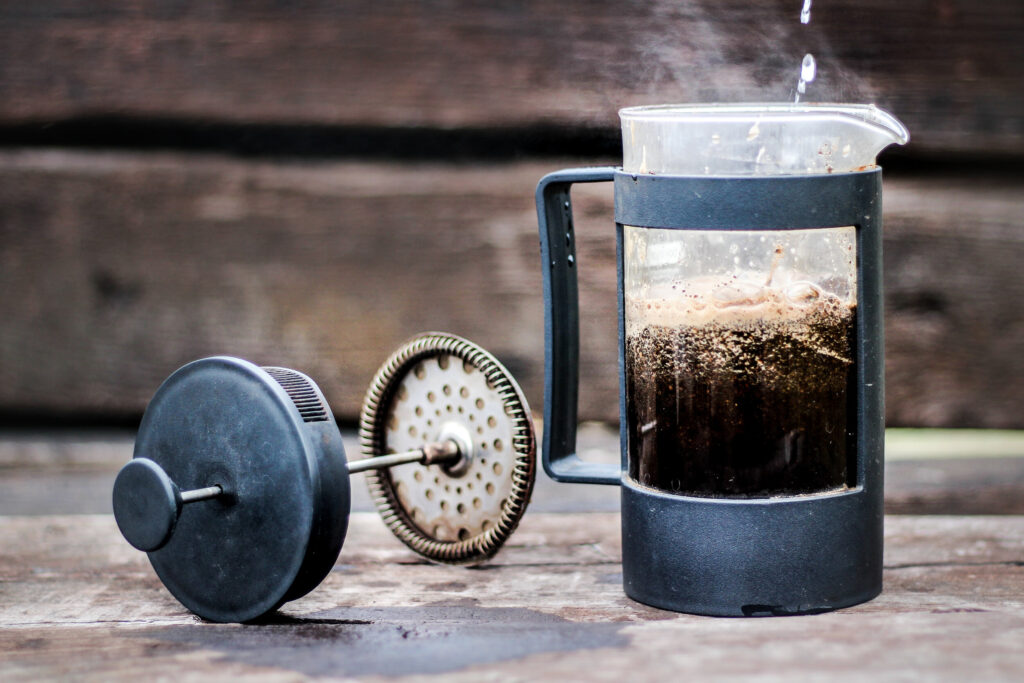
- Mild Brew: For a lighter, milder cup of coffee, steep for about 3 minutes.
- Standard Brew: The typical brew time for a balanced cup is around 4 minutes.
- Strong Brew: For a stronger, more robust flavor, steep for about 5 minutes.
Adjusting for Quantity
- Smaller French Press (12-17 oz): Steep for 3-4 minutes.
- Medium French Press (24-34 oz): Steep for 4-5 minutes.
- Larger French Press (51 oz): Steep for 5-6 minutes.
Experiment with the steeping time to find the perfect balance that suits your taste. Remember, over-steeping can result in a bitter brew, while under-steeping can produce a weak and under-extracted cup.
Common Mistakes to Avoid
Using a French Press can be straightforward, but some common mistakes can ruin your brew.
- Using Too Fine a Grind: Leads to over-extraction and a gritty texture.
- Rushing the Brewing Time: Steep for the recommended duration to ensure full extraction.
- Skipping Preheating: Preheat your French Press to maintain the right brewing temperature.
- Leaving Coffee in the Press: Pour out the coffee immediately after brewing to prevent over-extraction and bitterness.
- Inconsistent Measurements: Use a scale for accurate coffee-to-water ratios.
Enhancing Your French Press Coffee
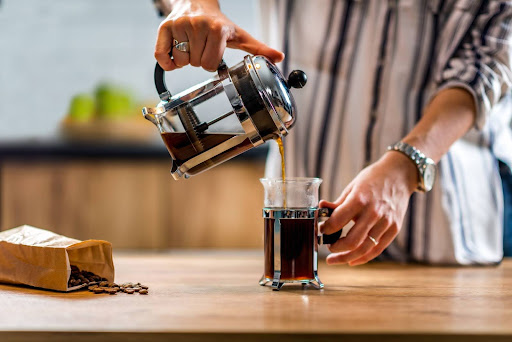
- Use Fresh Beans: Start with high-quality, fresh beans.
- Grind Just Before Brewing: Capture the full spectrum of flavors.
- Use Filtered Water: Avoid off-tastes from impurities.
- Maintain Proper Water Temperature: Aim for 195°F to 205°F.
- Experiment with Ratios: Adjust the coffee-to-water ratio to suit your taste.
- Clean Your French Press Regularly: Prevent old coffee residues from affecting flavor.
- Bloom the Coffee: Let it sit for 30 seconds after the initial pour to release trapped gases and enhance taste and aroma.
FAQs
How do I clean my French Press?
Disassemble the French Press and rinse all parts with warm water. Use mild soap and a brush to clean the mesh filter thoroughly. Avoid using abrasive materials that can damage the glass or stainless steel.
How long should I steep my coffee in a French Press?
Steep your coffee for about 4 minutes for a balanced brew. Adjust the time based on your desired strength: 3 minutes for a milder cup and 5 minutes for a stronger brew.
Can I use pre-ground coffee in a French Press?
While you can use pre-ground coffee, it’s best to grind your beans just before brewing for optimal freshness and flavor. Ensure the grind size is coarse.
What’s the ideal water temperature for French Press coffee?
Bitter coffee can result from over-extraction. Ensure you’re using the right grind size, proper coffee-to-water ratio, and recommended steeping time. Also, avoid leaving coffee in the press after brewing.
Disclosure: Our blog contains affiliate links to products. We may receive a commission for purchases made through these links. However, this does not impact our reviews and comparisons. We try our best to keep things fair and balanced, in order to help you make the best choice for you.

